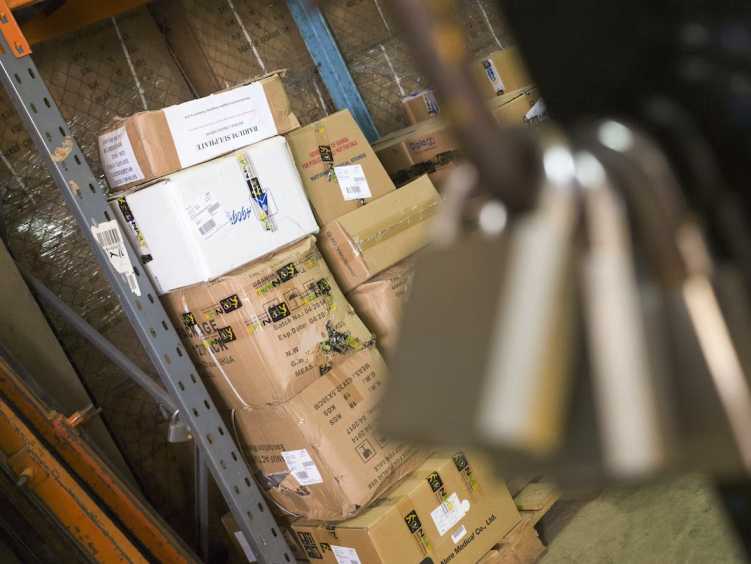In today’s rapidly changing environment, the importance of climate-smart supply chains cannot be overstated. Climate change is no longer a distant threat, but an ever-present reality that is challenging businesses and industries to adapt and thrive. In this article, we will delve into the concept of a climate-smart supply chain, examine the impact of extreme weather events on supply chains, and explore the potential solutions for companies to navigate these challenges.
Defining a Climate-Smart Supply Chain
A climate-smart supply chain is a strategic approach to managing the flow of goods and services in a manner that minimizes negative impacts on the environment while maximizing the resilience of the supply chain itself. This involves assessing and managing the risks posed by climate change, such as extreme weather events, and implementing measures to adapt and mitigate these risks.
The Need for Climate-Smart Supply Chains
Climate change is causing more frequent and severe weather events, leading to increased disruptions in global supply chains. These disruptions can have severe economic and social consequences, as illustrated by several real-life examples:
The 2011 floods in Thailand
These devastating floods caused widespread damage to the country’s manufacturing facilities, leading to significant disruptions in the global electronics and automotive industries. Companies like Apple, Toyota, and Honda were forced to halt production due to a lack of components, which in turn affected their supply chains and bottom lines.
Cyclone Yasi in Queensland, Australia (2011)
This powerful tropical cyclone caused extensive damage to the region’s agricultural sector, particularly the sugar and banana industries. The resulting shortages led to higher prices for consumers and strained the global supply of these commodities.
Typhoon Haiyan in the Philippines (2013)
A deadly typhoon that wreaked havoc on the country’s infrastructure and agricultural sectors—Typhoon Haiyan caused widespread food shortages and economic losses that rippled throughout the global supply chain.
Interdependence of Global Supply Chains
These examples demonstrate the interdependence of global supply chains and the domino effect that adverse weather events can have on other industries.
Disruptions in one part of the world can have far-reaching consequences, affecting the availability of goods and services, consumer prices, and even employment opportunities in other regions.
This underscores the need for companies to invest in climate-smart supply chain management strategies to minimize the economic implications of supply chain disruptions.
Importance of a Global Strategy for Adaptation
A global strategy for adaptation is essential because the effects of climate change are not confined to any one region or industry. In contrast to local strategies, which focus on specific vulnerabilities in a particular area, a global approach takes into account the broader implications of climate change and the interconnected nature of supply chains. This proactive approach enables companies to better anticipate and manage the risks associated with climate change, ultimately ensuring the resilience and sustainability of their supply chains.
One key aspect of a global strategy is disclosing the climate-related risks and opportunities that can affect a company’s supply chain. By being transparent about these risks, companies can better understand their potential impacts and develop strategies to address them.
Economic Benefits of a Climate-Smart Approach
Investing in climate-smart supply chain management can yield significant economic benefits for businesses. By increasing resilience and reducing the risk of disruptions, companies can minimize costly production delays and potential reputational damage. Moreover, by embracing sustainable practices, businesses can tap into the growing consumer demand for environmentally responsible products and services, thereby gaining a competitive advantage in the marketplace.
Potential Solutions for Adapting and Navigating Challenges
To effectively adapt and navigate the challenges of a changing climate, companies should consider the following potential solutions:
Tip 1: Use an environmental impact monitor
Using an environmental impact monitor can help companies assess and track the potential ecological effects of their supply chains. This information can help identify areas for improvement, implement more sustainable practices, and ultimately reduce the overall environmental footprint of the supply chain.
Tip 2: Invest in resilient infrastructure
Companies should invest in infrastructure that is designed to withstand the impacts of extreme weather events, such as flood-resistant facilities and energy-efficient transportation systems. This not only helps minimize the risk of disruptions but also contributes to long-term sustainability efforts.
Tip 3: Diversify suppliers and locations
To reduce dependency on a single supplier or region, companies should diversify their sources of raw materials and production facilities. This can help minimize the risk of disruptions and ensure a more stable supply of goods and services.
Tip 4: Develop contingency plans
Companies should develop and regularly update contingency plans to manage the risks associated with extreme weather events. These plans should include backup suppliers, alternative transportation routes, and emergency response strategies to minimize disruptions and maintain business continuity.
Tip 5: Embrace digital transformation
Digital technologies, such as the Internet of Things (IoT), artificial intelligence (AI), and blockchain, can help companies optimize their supply chains and improve their ability to respond to disruptions. For example, IoT-enabled sensors can monitor the conditions of goods in real-time, while AI can be used to predict demand patterns and optimize inventory levels. Implementing cyber supply chain principles can further strengthen the overall supply chain resilience.
Tip 6: Foster a culture of sustainability
Companies should encourage employees to think about the environmental impacts of their decisions and promote a culture of sustainability throughout the organization. This can help drive innovation and the adoption of more sustainable practices across the supply chain.
Tip 7: Implement sustainable logistics
Adopting sustainable logistics practices can help companies minimize the environmental impact of their supply chains while also reducing costs. This may include optimizing transportation routes, reducing packaging waste, and using energy-efficient vehicles.
Conclusion
Climate-smart supply chains are essential in today’s changing environment, as they offer businesses the opportunity to minimize risks, reduce costs, and capitalize on new market opportunities. By adopting a global strategy for adaptation and implementing the potential solutions outlined in this article, companies can navigate the challenges of a changing climate and build more resilient and sustainable supply chains for the future.
Salman Zafar is an acclaimed blogger, editor, publisher and digital marketer. He is the founder of Blogging Hub, a digital publishing portal with wide following across the world.



1 thought on “The Climate-Smart Supply Chain: Navigating the Challenges of a Changing Environment”